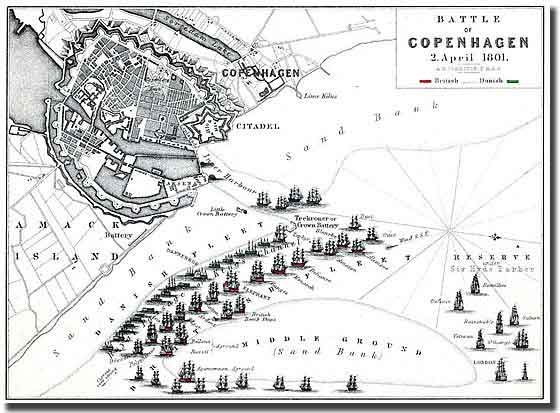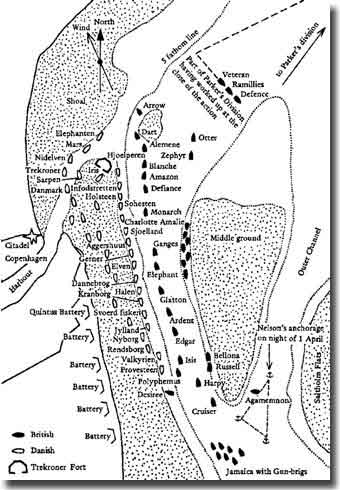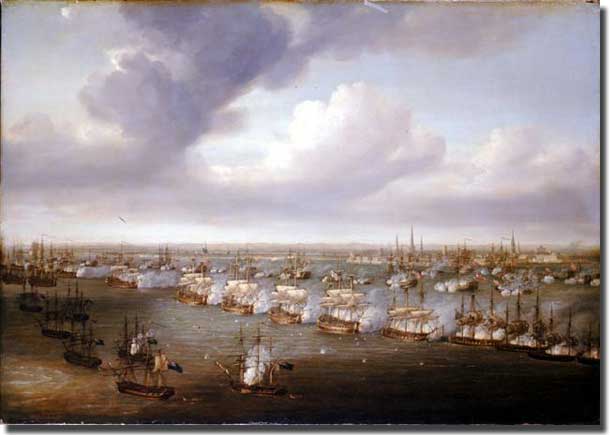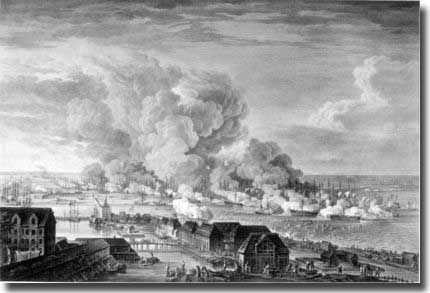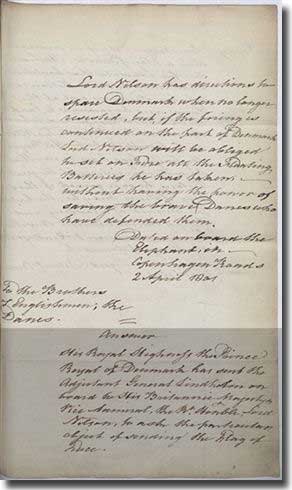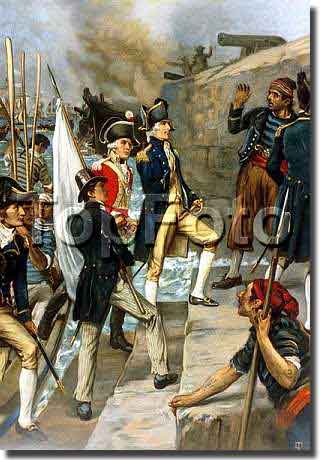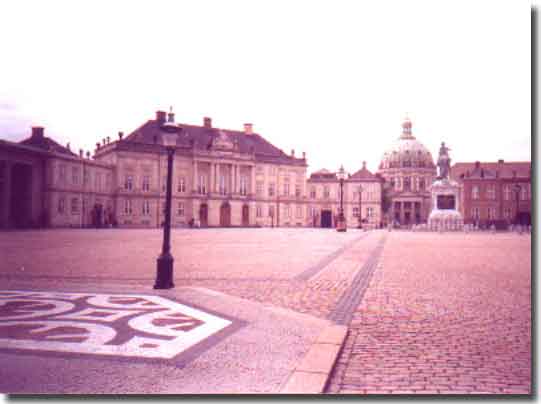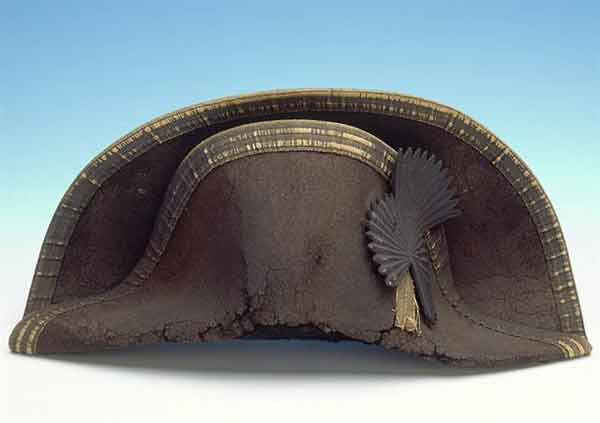|
" I really did not see the signal! " Lord Horatio Nelson at Copenhagen. 2nd. of April, 1801
work in progress Introduction. British Fleet sails from Yarmouth. In the hope that diplomacy might win the day, the Honourable, Nicolas Vansittart had proceeded the fleet to parley with the Danes.Admiral Sir Hyde Parker commanded the British Fleet with Nelson as his deputy. Tsar Paul assassinated.
Position of the Danish ships. The British Fleet. Now Nelson with twelve shallow draft ships decided to sail past Copenhagen by an outer but more difficult channel, anchor south of the city, and attack from that direction when favourable winds allowed. By the 1st. of April, Nelson in Elephant and his ships had sailed past the city and anchored. Parker with his heavier ships lay to the north, ready in reserve. By the morning of the 2nd. of April, the wind had shifted to the south, the scene was set for an attack. Nelson hoisted the signal to his ships to attack, Agamemnon, Bellona, and Russell all immediately ran aground on the shoals. His other ships on reaching their berths anchored by the stern and opened fire on the Danes with their broadsides. Meantime, Admiral Parker observing two of Nelson's ships were flying distress signals, hoisted a signal for Nelson to disengage his action, this was Signal No. 39. Elephant's signal Lieutenant, Frederick Langford, called out to Nelson to tell him the meaning of Parker's order, but Nelson ignored him, so once again, Langford shouted out the Admiral's order. This time, Nelson is reported to respond " I told you to look out on the Danish Commodore and let me know when he surrendered. Keep your eyes fixed on him. " But Langford persisted, should he pass on Parker's signal to the other ships? No! said Nelson, he could not.
Nelson now turned to his Flag Captain Foley, " You know, Foley, I have only one eye. I have a right to be blind sometimes. : Raising his telescope to his right eye, he added: " I really do not see the signal." Once more, we find Lord Nelson blatantly going against his superior's orders, just as we have noted at the Battle of St.Vincent, here he goes again, trusting his own judgement, having faith in his Captain's and their crews ability, that he will prevail and find victory, and therefore be forgiven for any transgression.
This furious bombardment to and fro between the British ships, and the Danish ships and the fort continued over three hours, there was no manoeuvering, just bloody bombardment. The Danes could reinforce their gunners in both their ships and and Trekroner Fort, not so the British, both sides suffering griveous casualities, but still Nelson persisted. Ships on both sides were critically damaged, the Danish flagship Dannebrog burning fiercely, slipped her moorings. The British boarding parties very active as they captured twelve of the Danish ships.
Battle of Copenhagen Roads April 2, 1801. (Painting by C. A. Lorentzen - from the archives of the Royal Danish Naval Museum) Nelson penned an ultimatum, addressed to the " The brothers of Englishmen, the Danes."
This letter was given to Commander Fredick Thesiger, who spoke Danish, he went ashore under a flag of truce, secured to an oar and delivered the letter to Crown Prince Frederick. A truce resulted, with Nelson claiming victory, but at a great cost, six ship seriously damaged, Elephant had now grounded, and almost 1,000 British sailors were dead or wounded, the Danes reported to have had 2,000 casualities. Nelson now repaired to the London to report to his C-in-C, not sure of his reception.
But, having secured victory, he was on safe ground, and he received approbation from Sir Hyde. Nelson asked by Sir Hyde Parker to go ashore to negotiate with the Danes. Nelson was asked by his Admiral to proceed ashore the next day to negotiate a settlement with the Danes, although he did not fancy himself in that role, he readily agreed.
The following day which happened to be Good Friday, Nelson met with the Crown Prince at Amelienborg Palace, built in the 1750's, that evening he was the guest of honour at a State banquet. Nelson left the Crown Prince in no doubt that the Northern Alliance must be rescinded, or the Danes would face indescribable consequences. The 9th. of April found Lord Nelson again ashore with an agreement he hoped the Danes would accept, after a deal of negotiation, the Danes signed.
Amelienborg Palace Copenhagen, where Nelson conducted peace negotiations with the Danes after winning the Battle of Copenhagen, April 2nd. 1801. By the 1st. week of May, Sir Hyde was recalled home, he had not done well by leading from the rear, and had proven to be rather a weak leader, he had Nelson to thank for victory, having contibuted little to that result. Ultimately he was never to be employed again, and Nelson assumed the role of C-in C in the Baltic. Lady Emma Hamilton's Birthday. At Tallin. Once more Lord Nelson had prevailed to give immense service to his country. Nelson relieved.
Nelson left for England on the 19th, of June to arrive at Greater Yarmouth on the 1st. of July. Conclusion.
|

